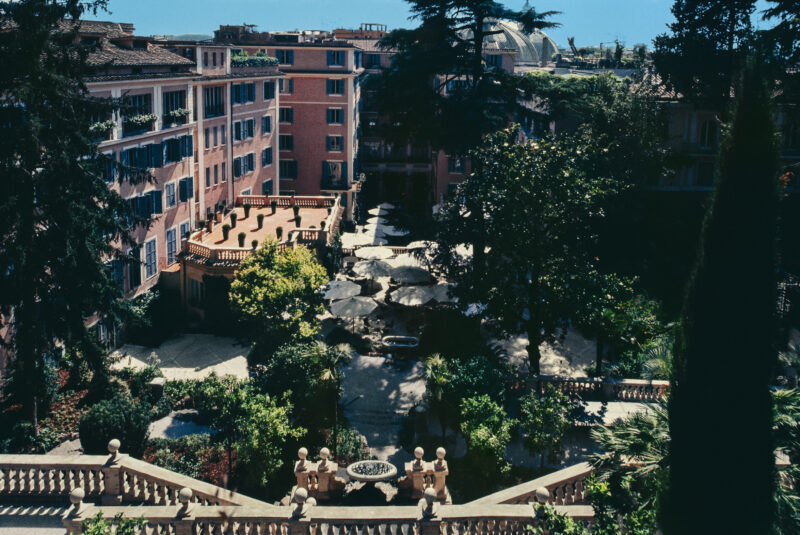
Cats.
They divide opinion the world over.
Are they lucky or not?
In Japanese culture cats are said to bring wealth and good fortune. In England it is considered good luck to present a bride with a black cat on her wedding day. Mind you in Wales, if a young woman steps on a cat’s tail, she will never marry.
An Italian superstition believes that a sneezing cat is lucky to anyone who hears it.
More practically, a Chinese proverb declares, ‘black cat or white cat: if it can catch mice, it’s a good cat’.
The two Hotel De Russie cats, Mona, and Lisa, couldn’t have been luckier.
To be abandoned at the door of the most exclusive five-star hotel in Rome must surely be a stroke of enormous luck.
It worked out for both parties; the hotel also desperately needed them. The previous pest controller, a bird of prey, got lazy.
Mona, the diva, and Lisa, the wallflower, wander gallantly through the hotel, sleeping, eating, and relaxing, just as the human guests do.
And so they should, they are part of its fabric now.
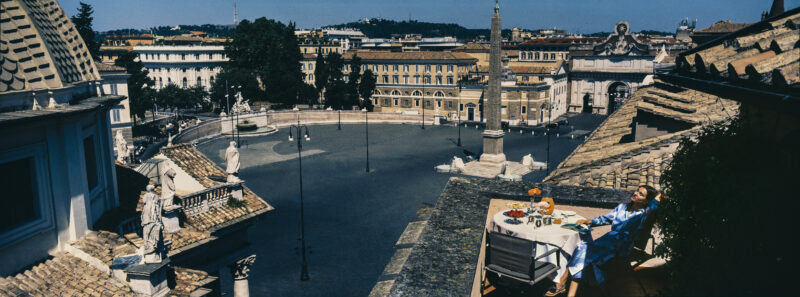
Situated between the Piazza del Popolo and the Spanish Steps, the hotel is embraced by the luxury boutiques of the Via del Babuino, one of the three pronged streets that runs from the Piazza.
Tourists scurry, popping in and out of the many fashion houses, bags laden with designer goods stamped with ‘Made in Italy’.
Quiet right. ‘Made in Italy’ signifies quality and style.
Just like Hotel de Russie.
The hotel was once a palace, owned by the French Torlonia family before being transformed into ‘Albergo dei Re’ or the ‘Kings Hotel’, a nickname given to it by fashionable travellers in the 19th century.
Rather cruelly, for a short period in 1969 it stopped being a hotel and was the head office of the RAI, the Italian TV and broadcasting corporation.
Thankfully, sense prevailed.
Designed by architect Guiseppe Valadier, who refreshed the Piazza del Popolo, the palace was strategically placed to improve connections between the Vatican and the city centre, a passageway that was being traversed by travellers and pilgrims daily.
This fuelled the rise of luxurious inns and hotels and thankfully for us, the birth of Hotel de Russie.
Upon arrival the hotel seems unassuming.
Don’t be fooled, this is the tip of the iceberg.
The colossal, dark olive-green doors, with gold door knockers the size of a gladiators galea, let you know you’ve arrived.
Draw breath and be prepared for magnificence.
‘Hotel de Russie’ is emblazoned in large gold lettering. Just in case you were unsure.
No flags and fanfare here. None needed.
In the centre of the façade a plaque has been erected to commemorate Prince Jerome Napoleon, the husband of Clothilda of Savoy, who spent the last years of his life in the hotel.
I can see why he did.
He, members of the Royal Family, artists, celebrities, and politicians are all drawn here.
To the purveyors of luxury.
The doorman, with an appropriate top hat, beckons you in.
Eyes strive to adjust to not only the spectacular central indoor floral display, of such magnitude and design that it wouldn’t look out of place on the ceiling of the Sistine Chapel. But to the plethora of white canopies in the distance, culminating in a bubbling fountain at the foot of Pincio Hill.

This is the Secret Garden.
Except it is not so secret anymore.
Visitors and locals flock to wander through the 2,800 metres of terraced gardens, brimming with palm trees, yews, white climbing roses and orange trees baring fruit even in the depths of winter.
This is another Valadier masterpiece.
The gardens have recently been restored, and in celebration seven new garden suites have been added. There are 120 rooms and suites in total, including a Valadier Suite, many with views of the Secret Garden, Piazza Popolo, and the Rome skyline.

Pioneered by Olga Polizzi, Director of Design for Rocco Forte Hotels, the garden suites are consistent with the contemporary feel throughout the hotel. Cobalt Blue and greens purposefully bring the outside in. A deliberate and delicate extension of the garden.
Modern furnishings have been uniquely selected such as lamps by Fontana Arte and cushions by Fornasetti. Busts and sculptures inspired by ancient Rome synchronise with trend setting photographs by Serafino Maiorano depicting present day Rome.
All rooms and suites have superbly selected objets d’art; a green marble horse, for example, or carved wooden domes, replicating the many domes of the 1000 churches scattered across the city. Intentionally placed full wall mirrors reflect the sunlight, rich wallpaper, warming palettes, fresh flowers, Carrara marble bathrooms, Irene Forte toiletries and of course an Italian Illy coffee machine.
One always needs a macchiato.
The revamped lobby is bathed in light. Sumptuous deep velvet green sofas are complimented by cream ones, accessorised with burnt orange cushions. Upholstered chairs sit neatly beside the glass console tables. Off white leaf uplighters add to the muted lighting. An antique bas relief of Archangelo Gabriel, by sculptor Pietro Monti adorns the wall.
Carefully selected books rest on the ultra-modern bookshelf. Authors such as Virgil and William Shakespeare are side by side in recognition of the Rocco Forte brand, a blend of English and Italian.
Pianeta, a capsule designed by Elli and Rini has found its place in the corner, a soundproof space for those who wish to catch up on work or listen to music.
The corridors are dressed in up lit Roman heads; a bull horn-like instrument serves as a door handle. It also serves as a hanger for your daily newspaper bag should you wish to remain traditional.
Little gifts of dark chocolate truffles deliciously accompany the prosecco.
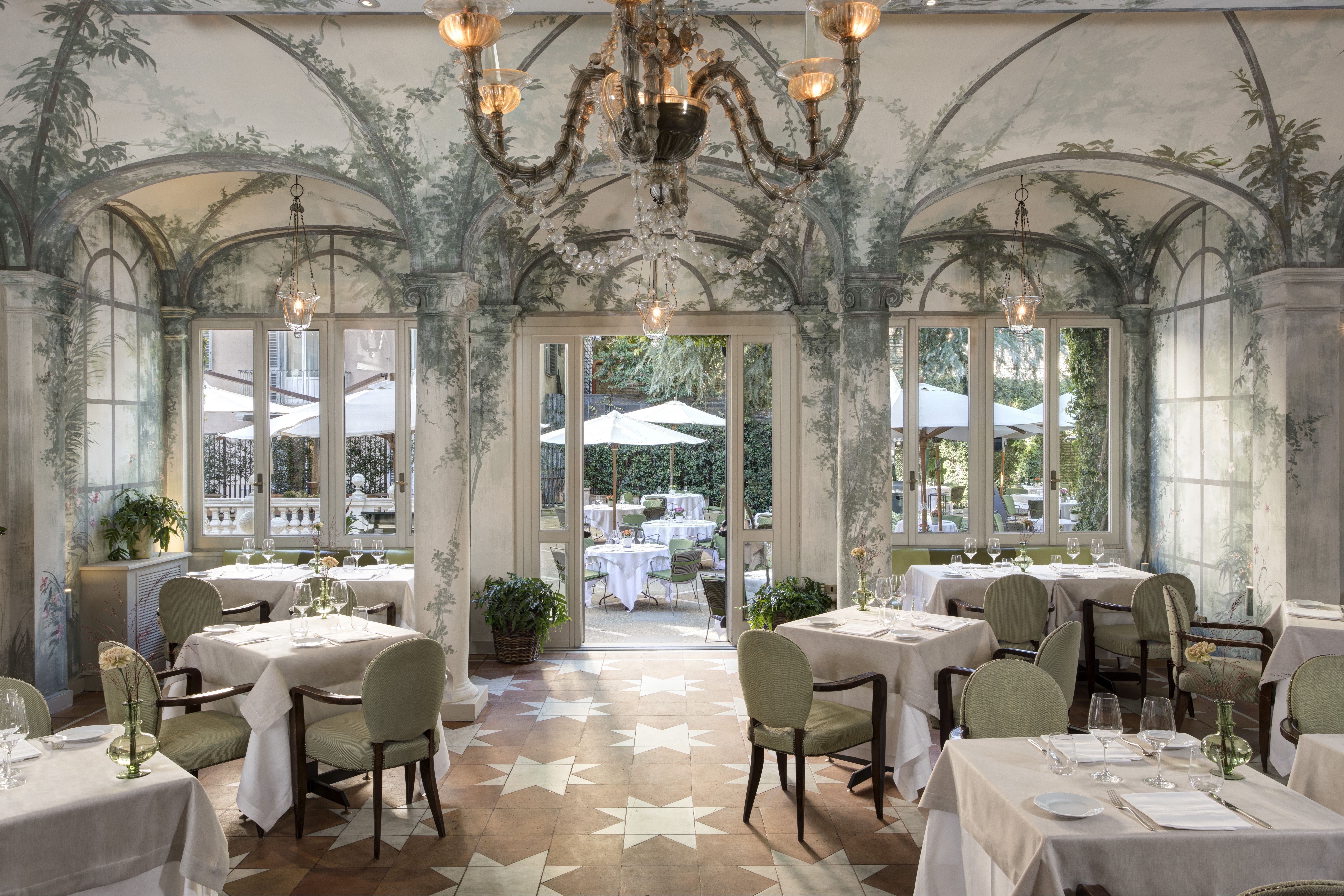
Breakfast and dinner are served in the recently renovated immersive restaurant, Le Jardin du Russie. Perfect for alfresco dining or just as fabulous for indoor dining, gazing at the hand painted creeping ivy walls, wide white open windows, and light green chairs.
To start the day, dine on fresh eggs, any way you like and homemade focaccia with strong coffee.
An afternoon tea plater is served alongside breakfast. Mozzarella, salmon, and bruschetta with freshly sliced fruit – share if you must.
For dinner, begin with le Foccaccine by Fulvio Pierangelini, the maestro of Italian cuisine.
This is a mini pizza on Focaccia bread, topped with Burrata cheese, Parma ham and puntarella.
Again, share if you must.
Follow with Wagyu beef or lemon scented pan fried sole. Make room for the chocolate fondant and passion fruit sorbet or pear ‘Sfoglietta’, a famous Italian pastry native to Campania.
To accompany the food, a vast array of Italian wine awaits.
Our bottle doesn’t breathe. A ‘coravin’ wine system is in place.
A long needle pierces the cork while the bottle is pressurised with argon gas to ensure none escapes. Thus, allowing you to have just one glass from a chosen bottle before the cork reseals.
Ingenious. Mostly.
After sampling the wine, I doubt one glass would be enough, may as well remove the cork.
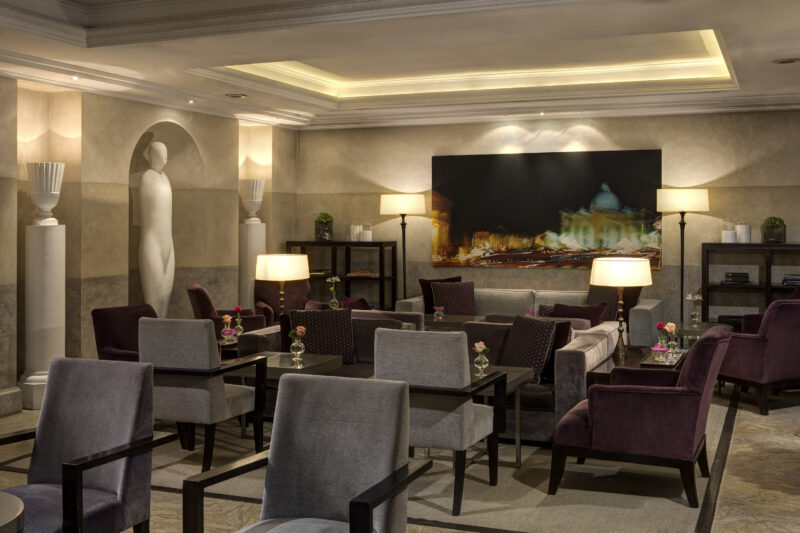
The award-winning Stravinsky Bar buzzes. A magnet for locals, the private tree lined piazza, framed by the salmon walls and grey shutters of the surrounding hotel, is the prime spot for a nightcap. Drink in the atmosphere, the scents and sounds of the garden, while sipping a Stravinsky Spritz or a Martini.
When in Rome..
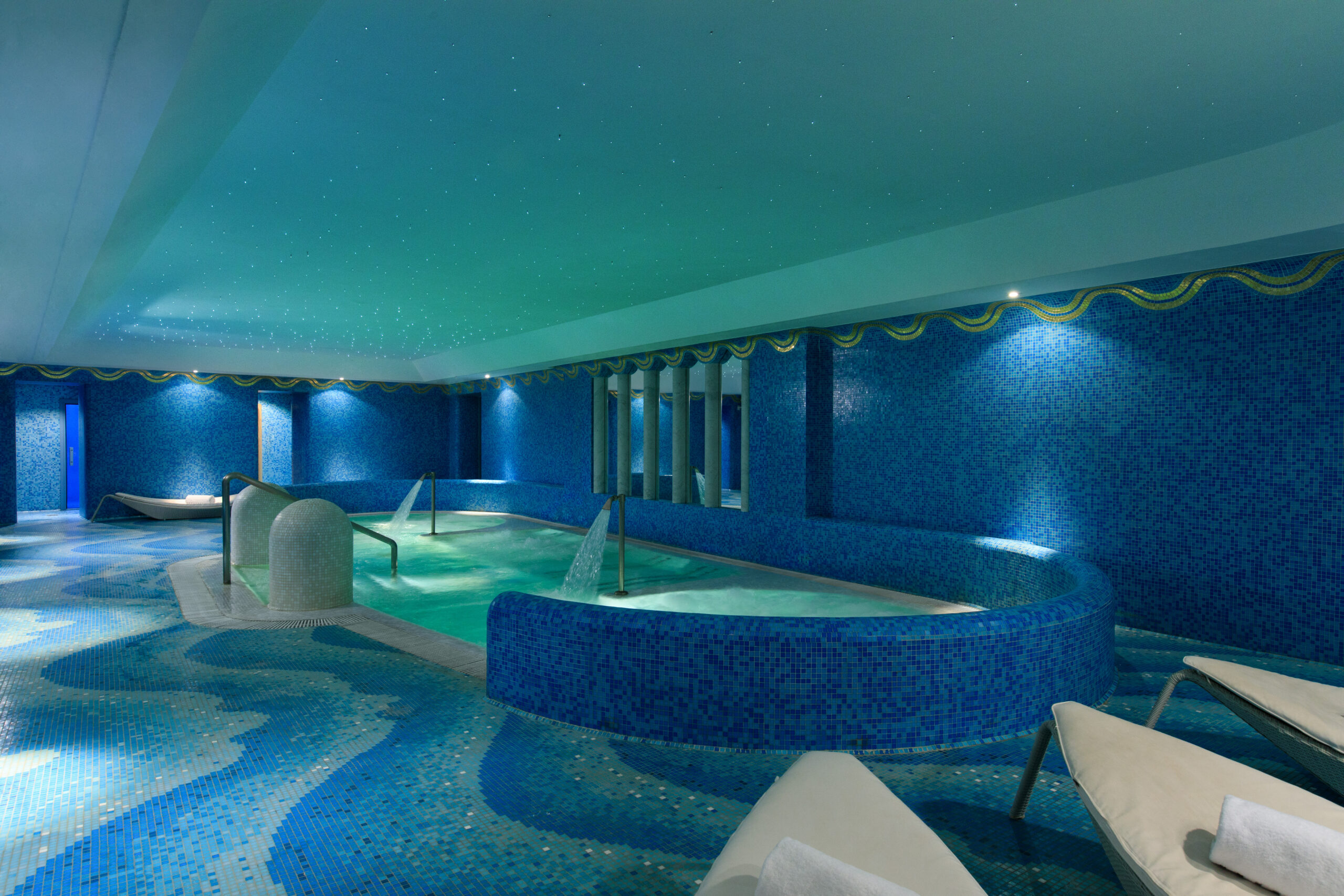
The De Russie Spa is the ultimate treat after a day mooching around the Eternal City. Soak in the saltwater pool and purge in the Finnish sauna. Indulge in a body treatment, the Irene Forte Facial comes recommended.
A fully equipped gym is also on hand should you feel you haven’t quite gotten your daily step count in.
You don’t need to hear Mona or Lisa sneeze to bring you luck.
If you are staying at the Hotel de Russie, your luck is already in.
For more information visit Hotel de Russie